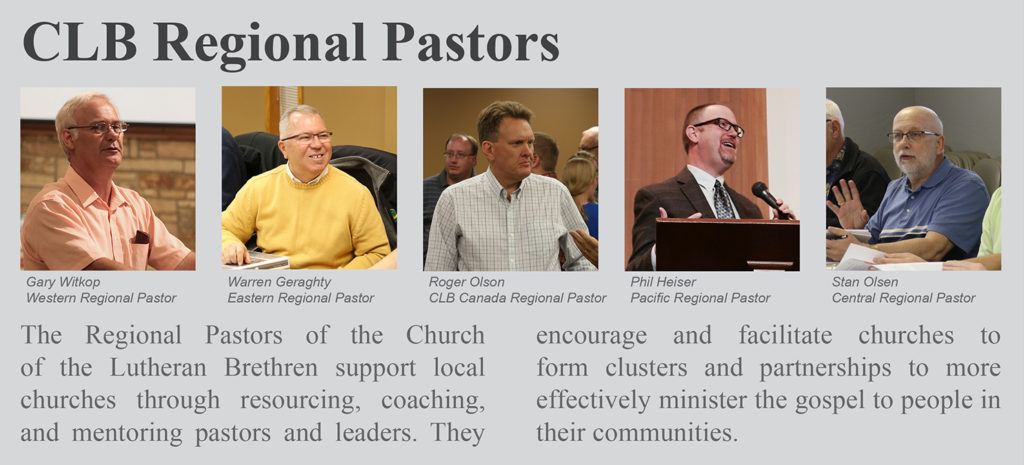
“Jesus Christ is the same yesterday and today and forever.” — Hebrews 13:8
hat a comfort to know that Jesus is always the same, that he never changes and that we can always depend on him to love us and forgive us! We have many such blessings because of his unchanging nature. However, in this fallen world, change is inevitable and always occurring. Some changes are positive and helpful, but other changes are harmful and even destructive. Change is always hard.
Our culture in North America has gone through tremendous change in the last two or three generations. Technological change has been breathtaking. One small example is that we now carry our phones, cameras, and computers in our pockets in one small device—a change that has occurred in just a little over ten years. Even more significant are the changes that have occurred culturally, morally, and spiritually in the US and Canada. These changes have certainly impacted our churches in a number of ways, particularly in their ongoing health and growth.
At the risk of oversimplification, let me illustrate how these changes have impacted churches: In the past, a small or medium-sized church could maintain and grow by doing effective ministry primarily directed inwardly. If the church had a good pastor who preached the Word, along with other effective ministries such as Sunday School, youth group, home Bible studies, women’s ministry, adult education, etc., then the church would likely maintain its size or even experience growth. Today this is generally not the case. In the past, the small or medium-sized church that ministered effectively could recover from the inevitable departures of people because there was usually a continuing inflow of visitors who were likely to replace them. But today, for most small to medium-sized churches, there are far fewer visitors—fewer people looking to be a part of the church.
There are many specific reasons for this, but generally speaking, the North American culture’s view of the Church has diminished dramatically. Typically, people in the broader culture don’t see the Church as relevant to their lives and needs. Churches are not the place to go to address the big questions, if they even ever ask those questions. People are extremely busy and their lives are so full of work, family involvements and recreation that they have little time for anything else, much less church involvement. So the inevitable losses of people from churches—through death, moving to other locations, normal attrition, discontentment, etc.—are not being recouped as they were in the past.
As a result, many churches are in plateau or decline. If they continue to function as they have in the past, focusing primarily on internally-directed ministries, they are not addressing this issue and will likely continue to decline. We have very real concern for the number of churches that are in plateau or decline in the Church-at-large in North America and particularly in the Church of the Lutheran Brethren. About 80% of CLB churches are in plateau or decline. That is an alarming number!
As the CLB North American Mission (NAM) has recognized this reality, we have begun to focus more on what our denomination can do to address this concern. At the most basic level—since fewer people are coming into our churches—our churches need to become more effective at connecting with and reaching people outside the walls of our church buildings. And our churches and believers will need to become better at building relationships with people who are not yet trusting Jesus as their Savior. As has always been the case, people are most effectively reached by the gospel through relationships with Christians—by the good news of Jesus spoken and lived out in the lives of believers.
Your Regional Pastors and NAM can offer a number of resources to help churches address these issues. Regional Pastors are available to consult with local churches to help them identify areas that can be strengthened in their efforts to reach people with the gospel. One resource that a number of our congregations have used is a Church Health Survey. This has been developed to help churches identify their areas of strength and their growing edges. Regional Pastors are also available to lead seminars and workshops to train, equip and empower our people to become more effective in evangelism and establishing and deepening relationships with non-Christians. Regional Pastors are also able to connect our churches with other resources that can help churches become more effective in reaching people, such as books, recommendations of seminars and conventions provided by other groups, and coaching for our pastors and church leaders.
One very simple place for churches to start is with the following three words: Prayer, Profile and People. Prayer is foundational to becoming more effective in reaching people. The profile of most of our churches typically needs to be raised in the communities where they’re located, and focusing on people more than on programs is crucial.
NAM is also in the process of developing a longer-term comprehensive strategy to help our churches address this area of revitalization. One element of this broader strategy to help churches in decline is to provide a trained team of 9-12 young adults and active retirees to join the congregation and community. Their goal is to bring energy and training to help the people of the church become more effective at making disciples and reaching their communities.
Please pray with us for our congregations, and please pray for your Regional Pastors as we seek to address this crucial need of revitalization in our churches.
Rev. Stan Olsen is Regional Pastor for the Central Region of the Church of the Lutheran Brethren.


